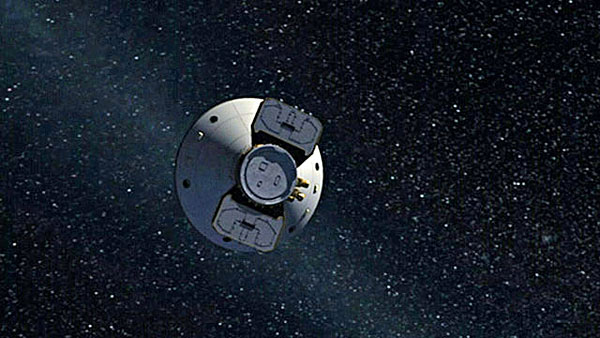Mars Orbiters Prepare to Watch Phoenix Landing

Three roboticpaparazzi orbiting the planet Mars are adjusting their flight paths to track anincoming NASA probe due to land on the red planet in late May.
The planmarks the first time that three orbiters will follow a landing on Mars and isexpected to return an unprecedented level of coverage throughout the entry,descent, and landing of NASA?s Phoenix Mars Lander on May 25.
"Wewill have diagnostic information from the top of the atmosphere to the groundthat will give us insight into the landing sequence," said David Spencer,deputy project manager at NASA's Jet Propulsion Laboratory (JPL) in Pasadena, Calif.? Such information would help deal with landing problems, and lead toimproved designs for future landers.
Launchedon Aug. 4, 2007, Phoenix is aiming for a site farther north than anyprevious mission to Mars. There, the lander will use its robotic arm to samplethe surface for soil and ice, as well as scan for conditions that could supportmicrobial life.
The threeorbiters - NASA?s Mars Odyssey, Mars Reconnaissance Orbiter (MRO) and Europe?sMars Express - are maneuvering to be in the right place at the right time whenPhoenix enters the Martian atmosphere at more than 12,750 miles per hour(20,519 kph).
"Wehave been precisely managing the trajectory to position Odyssey overhead when Phoenixarrives, to ensure we are ready for communications," said Bob Mase, themission?s manager at JPL. "Without those adjustments, we would be almostexactly on the opposite side of the planet when Phoenix arrives."
NASA?s MROspacecraft will make bigger adjustments, with one firing of thrusters on Feb. 6and at least one more course correction planned in April. The European SpaceAgency's Mars Express orbiter, meanwhile, has also positioned itself to recordtransmissions from Phoenix during the landing.
Get the Space.com Newsletter
Breaking space news, the latest updates on rocket launches, skywatching events and more!
Even NASArovers Spirit and Opportunity, currently exploring the martian surface, have helpedout by simulating transmissions from Phoenix to rehearse the orbiters?operations for the big day.
On thatday, Odyssey will turn its robotic eyes from the heavens to point an ultrahigh-frequency antenna towards the descending Phoenix. A high-gain antenna willstream information back to Earth as Odyssey watches Phoenix slow itself throughheat-shield friction, a parachute, and then firing descent rockets. That allowsthe lander to hit the Martian surface on three legs at just 5.4 miles per hour(2.4 m/s).
MRO andMars Express will start recording Phoenix transmissionsas backup data "about 10 minutes before landing," according to BenJai, mission manager at JPL for MRO.
Until then,all three orbiters are scoping out Mars for a suitable landing site.
- VIDEO: NASA's Phoenix: Rising to the Red Planet
- VIDEO: Looking for Life in All the Right Places
- Top 10 Amazing Discoveries by NASA's Mars Rovers
Join our Space Forums to keep talking space on the latest missions, night sky and more! And if you have a news tip, correction or comment, let us know at: community@space.com.
Jeremy Hsu is science writer based in New York City whose work has appeared in Scientific American, Discovery Magazine, Backchannel, Wired.com and IEEE Spectrum, among others. He joined the Space.com and Live Science teams in 2010 as a Senior Writer and is currently the Editor-in-Chief of Indicate Media. Jeremy studied history and sociology of science at the University of Pennsylvania, and earned a master's degree in journalism from the NYU Science, Health and Environmental Reporting Program. You can find Jeremy's latest project on Twitter.










